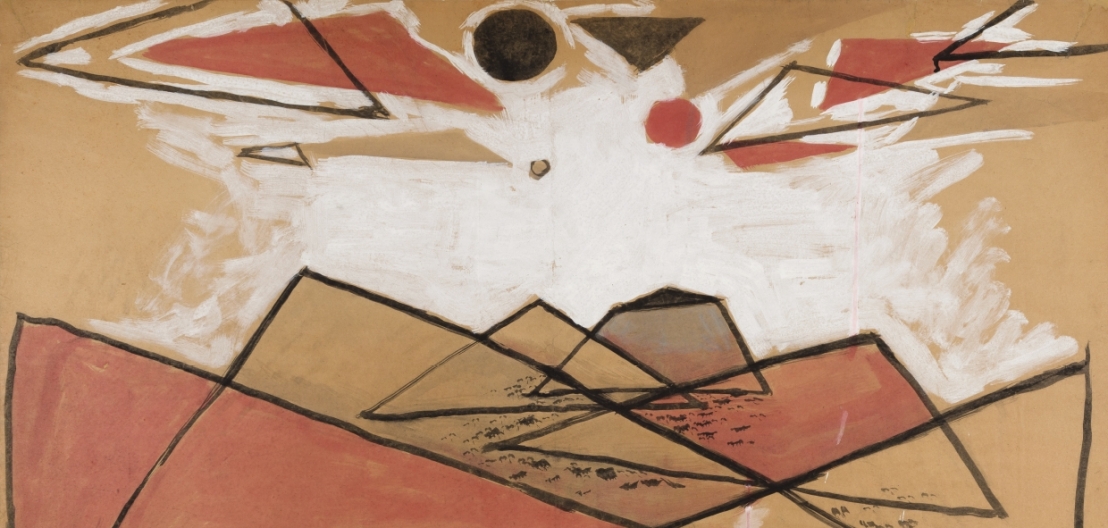Andrzej Wróblewski’s earliest known day planner, of 1948, has a small drawing on its inside cover. Dashed off in pencil, a few straight and diagonal lines link points to individual letters. This abstract diagram may have no meaning whatsoever, but its precision draws our attention. It looks like a note for or produced by performance art. However, when we decipher the abbreviations we find the route of a trip taken by the artist (Katowice, Chorzów, Bytom, Częstochowa, Oświęcim) and probably a mountain hike that began and ended in Zakopane. This is the first record we have of Andrzej Wróblewski’s journeys and hikes, and it is visually akin to the abstract views of cities, mountains, and landscapes he made out of geometric forms and figures that year. Mountains recur as a theme several times in Wróblewski’s oeuvre, and in a range of renditions. Their most splendid depictions come from 1952 and 1953, as indicated by another day planner. This set of several dozen black-and-white ink drawings of similar size forms a kind of pictorial essay on the Tatra’s peaks, glades, and passes. Interestingly, this was when Wróblewski developed a fondness for this technique and, starting in early 1952, used it for three series of works of a near-photographic aesthetic. The first portrays the construction of the blast furnace at the steelworks in Nowa Huta; the second, Mourning News, depicts society’s response on the day of Stalin’s death; and the third comprises over a dozen journalistic scenes of the flood that had recently swept through the north of the Netherlands. All these drawings feature strong lines and a feel for the emotion of the moment, with the power of photographic images or film stills. It would appear that this ink technique enabled Wróblewski to stop time and capture fractions of seconds.
The mountain trails of the highest massif of the Carpathians were where the fates of our protagonists crossed. Mieczysław Karłowicz (1876–1909) began travelling to Zakopane from Warsaw as a teenager, probably with a camera. Andrzej Wróblewski (1927–57) discovered the town as a student of the Academy of Fine Arts in Krakow, soon after his repatriation from Vilnius. Leon Wyczółkowski (1852–1936) was a regular visitor to the Podhale region between 1896 and 1913, documenting scenes from the life of the highlanders, portraying famous mountain guides, and above all, painting and drawing unique, stenographic impressions of the Tatras.







